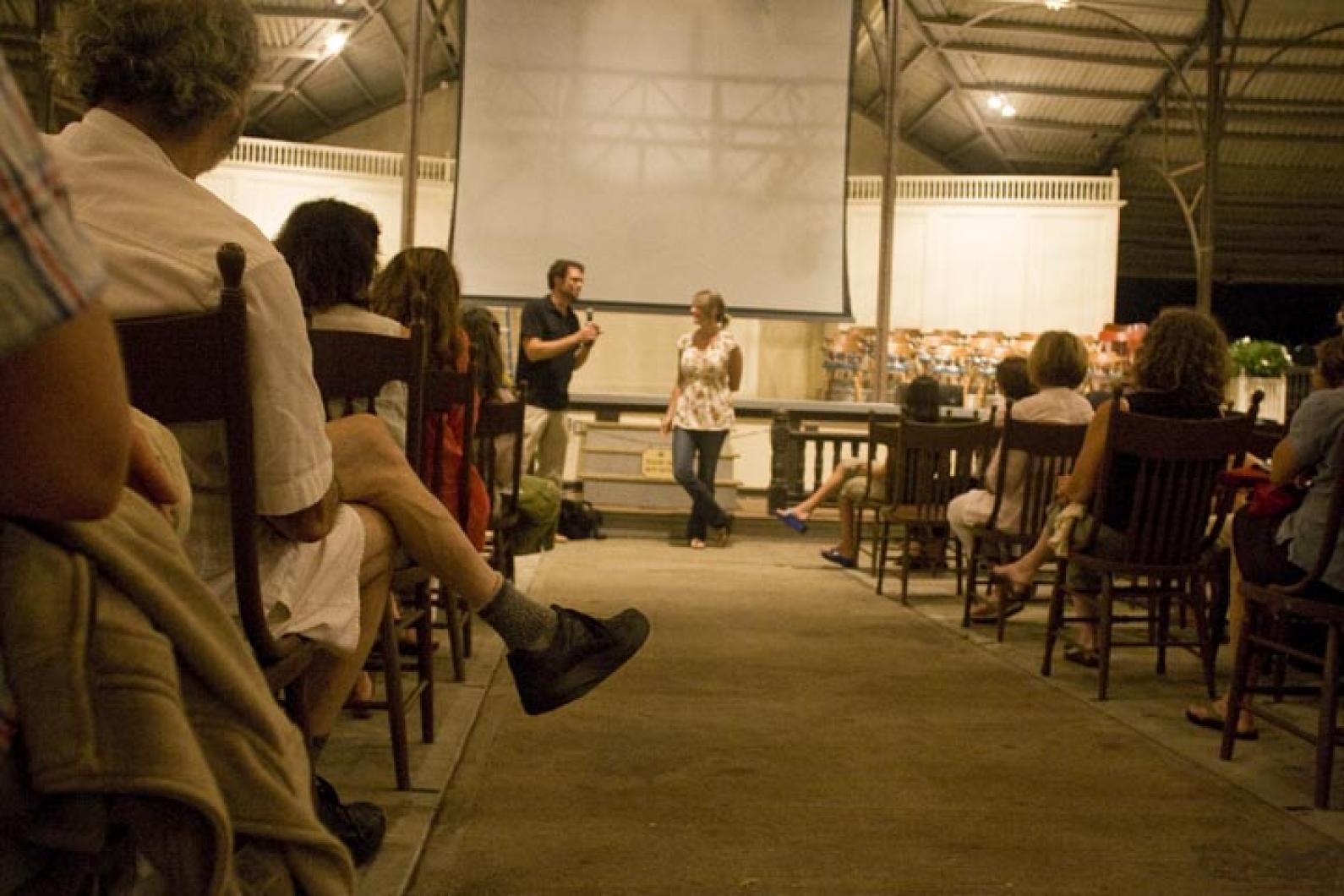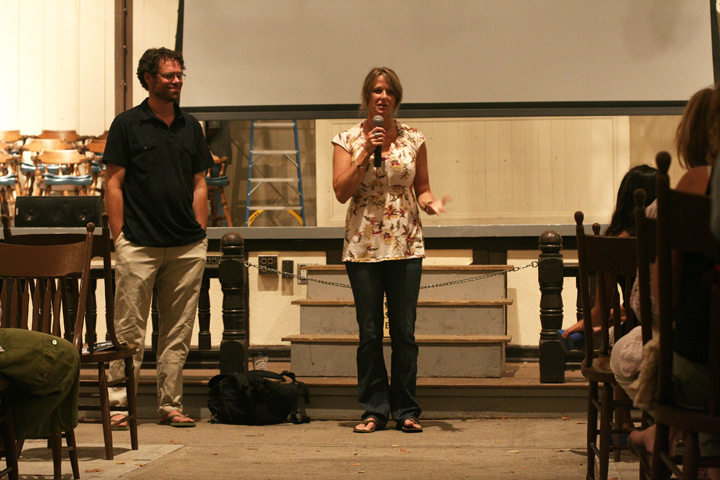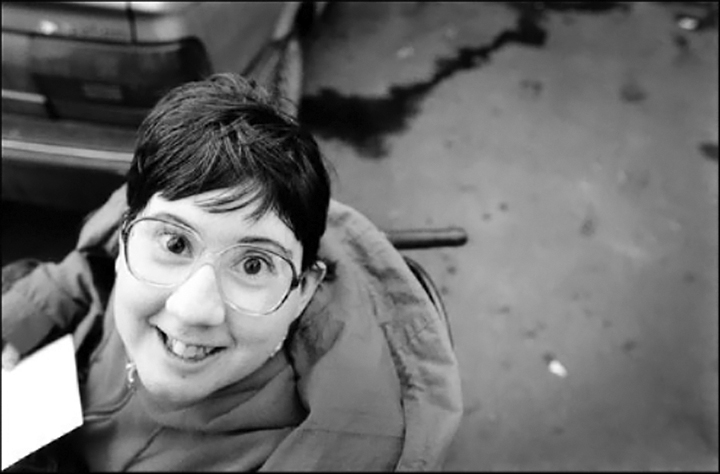Shooting Beauty director George Kachadorian wouldn’t mind settling for an Oscar, but his real objective is to get every student in the country to watch his 60-minute documentary. Mr. Kachadorian, along with the co-director and main subject of Shooting Beauty, Courtney Bent, also his wife, wants to engage America in frank, open conversation about disability.
The film, which was presented at the Tabernacle Wednesday night by the Martha’s Vineyard Film Society, tells the story of Ms. Bent’s experiences working at the United Cerebral Palsy Center in Watertown. In 1999, she left a potential career as a fashion photographer to immerse herself in a completely new photo project — offering the men and women of the center the opportunity to present themselves to the world on their own terms.
Ms. Bent gave cameras and film to the wheelchair-bound documentarians and asked them to tell their life stories through the lenses.
“I really had no idea what to expect,” she says at one point during an on-screen interview.
After seeing the images produced by Tony Knight, E.J., Kerri, Tom and Chris, among others, which force Ms. Bent to rethink her own ideas about photography, she takes the project to the next level and plans a gallery exhibition.
The Picture This project is, as Tony says in the film, a way to force disability into the open and start a dialogue about handicaps. Too often, he laments, people simply look away, or, in some instances, look too closely.
“My disability is not who I am,” he adds. In photography, however, all that matters is the final image, not the physical capacities of the person who made it. With photography comes freedom.
“I saw [Shooting Beauty] at IFF [International Film Festival] Boston last year,” said Martha’s Vineyard Film Society director Richard Paradise after the screening. “I thought, wow, that’s a fabulous movie.
“I felt strongly that this would be good for the Vineyard [audience],” he added, citing the Camp Jabberwocky and Chilmark Chocolates programs as just two of the many areas in which Vineyarders are already contributing to the disability conversation.
The film itself is pieced together from Ms. Bent’s original home video footage documenting all stages of her project, with recent interviews filling in some of the blanks.
“You have a huge block of granite in the studio,” said Mr. Kachadorian of the initial editing process, “and you can make it a beautiful sculpture or a pile of rubble.” With so much raw footage, he noted, it is often easy to get sidetracked away from the original story.
Noticeably absent from the film, for instance, are interviews with medical experts, although Mr. Kachadorian had initially conducted several of these with the intent to weave them into the documentary.
“I had a lot of experts telling us what it was like to be Tony Knight,” he said, explaining that he threw everything onto the cutting room floor when he realized that only Tony could describe his own life.
Tabernacle moviegoers agreed with Mr. Kachadorian’s decision.
“It really touched my heart to see through [that] lens,” said Genoveva Mathews of Concord. “It brings a totally different way of seeing.”
Stephanie Burke of Edgartown described Shooting Beauty as “very honest, sensitive and respectful,” while fellow Edgartown resident Debby Rosenthal marveled at its ability to capture humanity.
“It’s a happy, humorous film,” she said. “It grew beautifully.”
The film will be released in 12 cities in October, including Los Angeles and New York.
For more information on the documentary and its directors, visit everyonedeservesashot.com.








Comments
Comment policy »